Table of Contents
Walleye, walleye, walleye!
The best walleye fishing in the world…
That is how I describe where I live to people I cross paths with when I’m traveling. Growing up in the Kenora area, around Lake of the Woods, I’ve been spoiled with fantastic walleye fishing my whole life. Since I was a little kid, walleye have been my favourite species to catch through the ice because the action is always reliable, they are the best fish we have to eat and we catch plenty of big ones.
Nearly all of the resorts that stay open through the winter across the Sunset Country Region will be able to put you on some top-notch walleye fishing. Here are a few of my top tips.
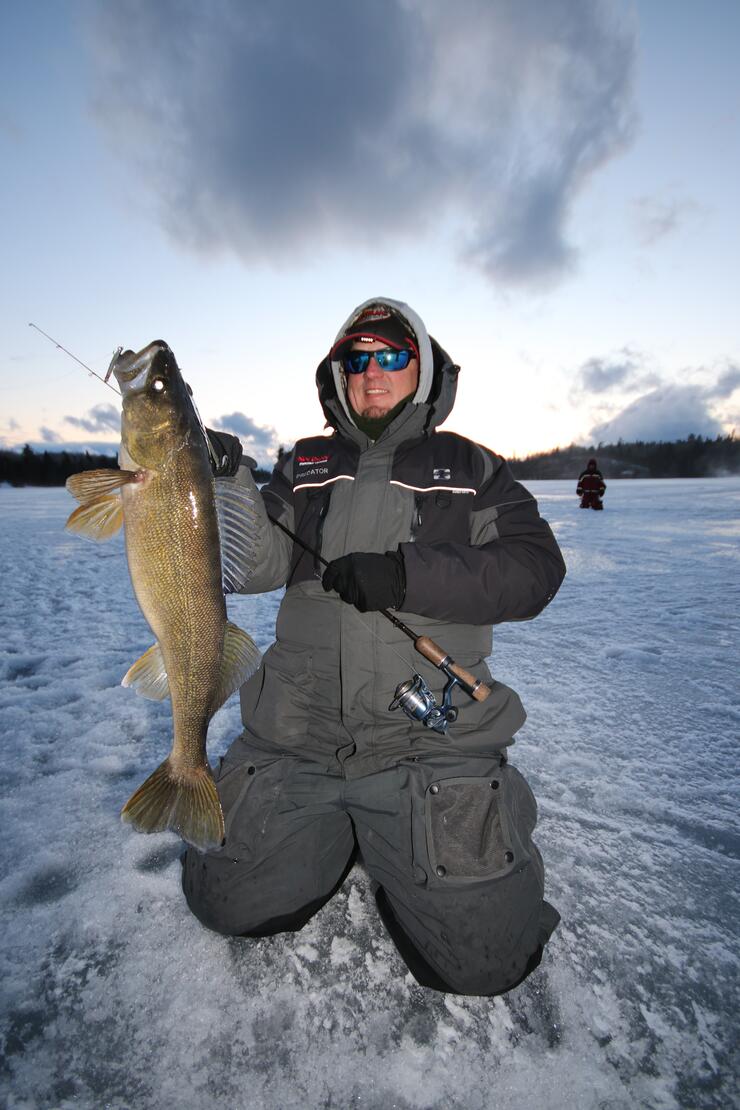
Where to catch walleyes through the ice
Across Northwest Ontario, we have a variety of different types of lakes that hold excellent populations of walleyes. Some are shallow and tannic-colored waters, and others are clear, deep-water lakes, with a variety of waters in between. Excellent walleye fishing exists across the region so how do you choose the best place for your ice-fishing adventure?
If you have visited us here in the open water season, does your favourite resort offer ice fishing? They could be a good place to start. The next consideration might be your transportation options. Snowmobiles or ATVs offer access to remote locations so you can find your own hot spots.
Drive-to-vehicle access is available on some waters, where ice roads allow you to drive right to your fishing spot. The availability of ice roads could be a discussion with whoever you book your trip with. Some resorts will rent snowmobiles, which might be a good way to go if you don’t own one. They are fun to drive and can really open up the doors for fishing opportunities.
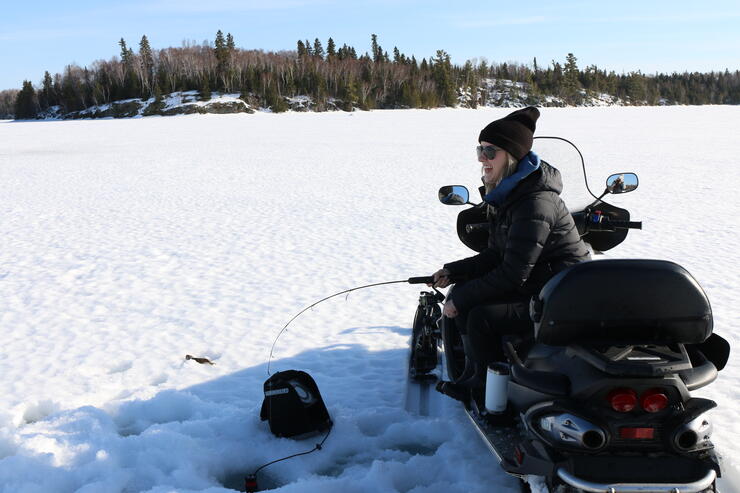
The season is open from freeze-up until April 15. Some years we’re able to stay on the ice right up to the 15th, other years the ice is done by the end of March. Like with some of the other species, my favourite times to be on the ice are early and late in the season. Early on, it’s easy to get around without a lot of snow on the ice, and getting the first crack at some of the humps and points that are good year after year results in some great fishing.
Walleye spawn shortly after ice-out around creek mouths or in shallow bays and predictably, they show up in front of these areas in March every year for the last few weeks of the ice season. I like to focus my efforts on structures like humps and points in front of these areas and if they don’t exist, walleyes can be caught on flats just out from the first good drop into deeper water. In some of the shallow walleye lakes, particularly some of the remote lakes, we’ll catch walleyes extremely shallow late in the season, sometimes as shallow as three to five feet. When you set the hook, they’ll just come flying up the hole.

Earlier in the season, focus on main-lake humps, points, and flats. A lot of the same spots that are good in the summer are also good in the winter, you might just have to drop out and fish a little bit deeper. Because our walleye fishing is so good across the region, I have a five-minute rule for the holes that I fish. Of course, there are days when you can set up shop in a shelter and wait for the fish to come to you. That can be relaxing, you can share some good fellowship with your buddies and hey, we get real winter so some days you have to hide out inside because it’s so cold.
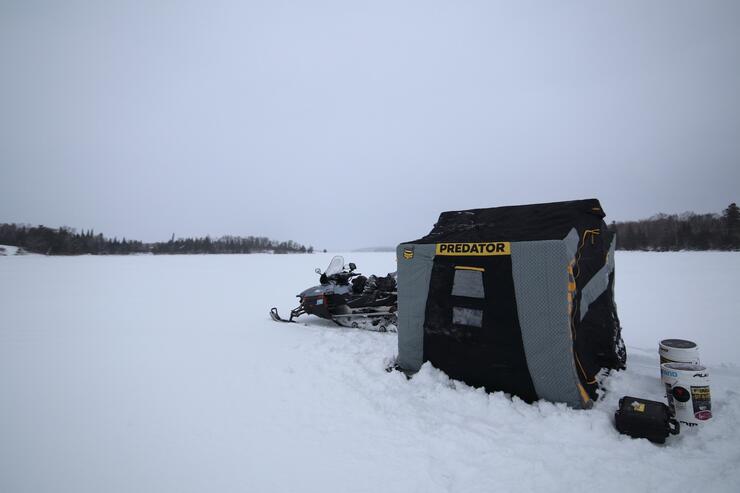
When I go for fun, I pick the nicer weather days and hole hop outside. If I jig in a hole for five minutes and don’t at least mark a fish, I’m moving to the next hole. Sometimes small adjustments in depth can make a big difference. Sometimes you’ll get a hole where you’re right over the top of a ledge or sharp drop and those are never as good. It’s good to be close to the edge, but a flat bottom is always the best for walleyes, where they can creep along and find your bait. The flats also allow the fish to congregate together as well.
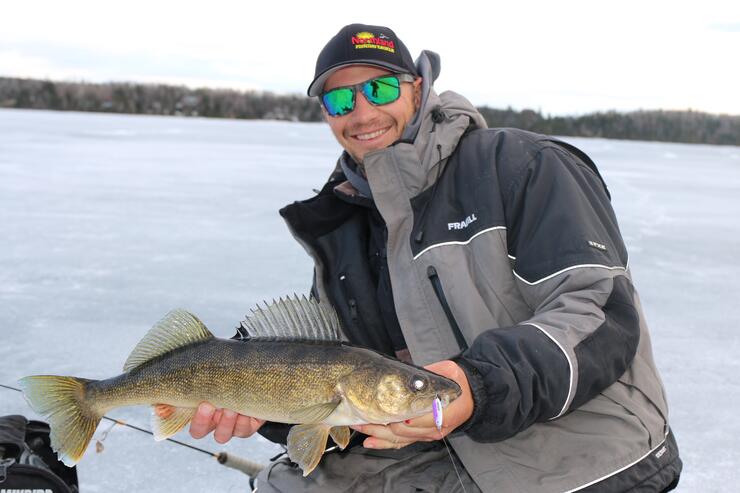
How to catch walleyes through the ice
For the past twenty years, I’ve seldom used anything but a spoon for fishing walleyes through the ice. My go-to has always been a Northland Buck-Shot Spoon, popular with walleye anglers across the ice belt. I’ll always tip my spoon with a frozen minnow head and it never lets me down.
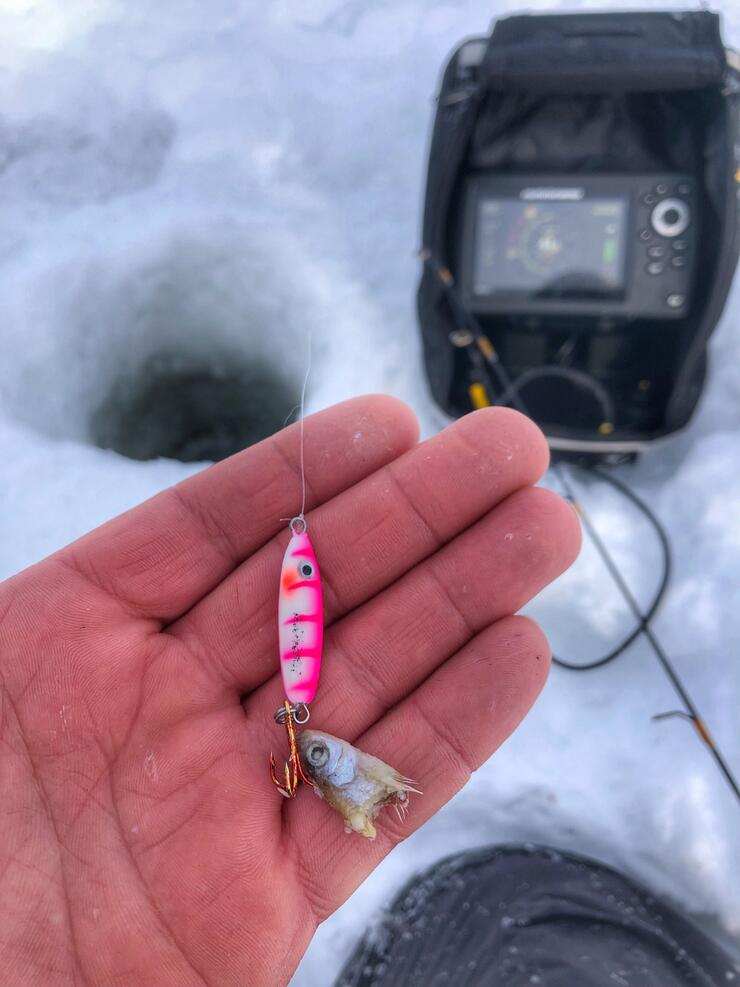
The traditional jig tipped with a minnow still works fine, I just think it’s more fun watching a spoon on my sonar unit and figuring out how to trick walleyes into biting it when they come in for a look. Some days, aggressive jigging gets bites, other days, you need to shake your spoon in a subtle manner. Figuring out how to trigger them to bite is the fun part. On some of the shallower, inland lakes, a jig tipped with a live minnow, hooked through the tail can be the best presentation. Something to consider if you fish in one of those types of lakes.
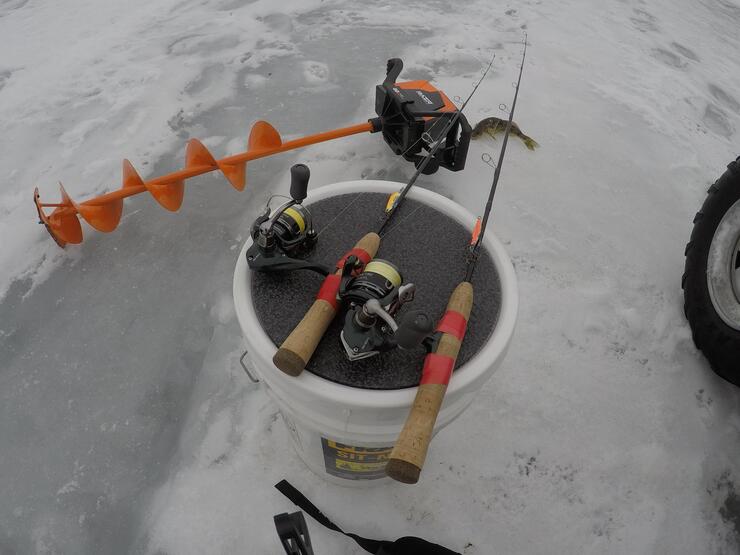
On the bigger waters, however, jigging with spoons or swimming jigs is tough to beat. Most of the time walleyes are going to be found near the bottom so electronics are not mandatory to catch fish but they will always help you put a few more on the ice. It’s good to know when walleyes are moving around beneath your hole and every once in a while, you’re going to see fish pass by that are slightly above the bottom so you can bring your bait up a bit so they can see it. More often than not, these suspended walleyes are aggressive and bite immediately.
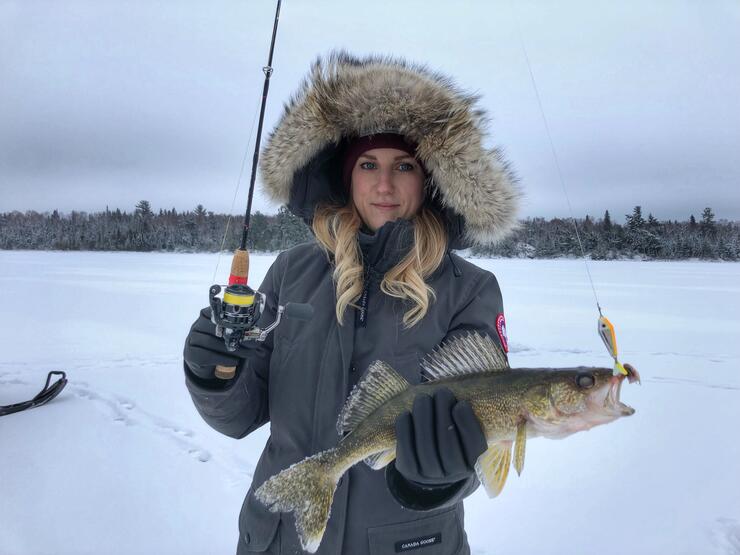
If you are coming to visit us for a fishing trip you should also know that the “prime-time” bite is exceptional on most waters. We call that last hour of daylight “prime-time” because the walleyes almost always bite a lot better than they do the rest of the day. In fact, on some of the clear water walleye fisheries, it’s tough to catch fish during the day, then they go nuts just before dark. If you are coming for a trip, don’t be afraid to stay out there late and catch that “prime-time” bite.
Some waters in Sunset Country have special regulations for walleye fishing, including size restrictions, no-fishing areas, and bait restrictions so it’s always good to consult the Ontario Sport Fishing Regulations before you hit the ice. If you stay with a resort, they will be able to direct you on specific regulations on their waters.
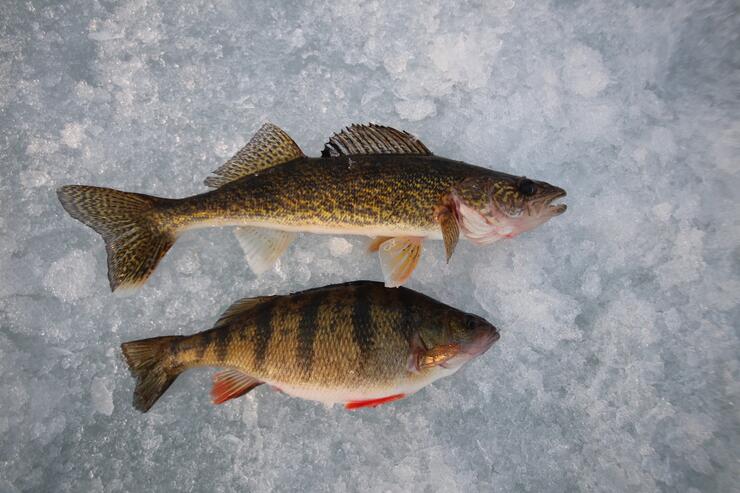
We look forward to seeing you on the ice in Sunset Country this winter.







































![Air gun 101: The differences between .177 & .22 – Which jobs they do best ? [Infographic]](https://airgunmaniac.b-cdn.net/wp-content/uploads/2024/11/1773-150x150.jpeg)
